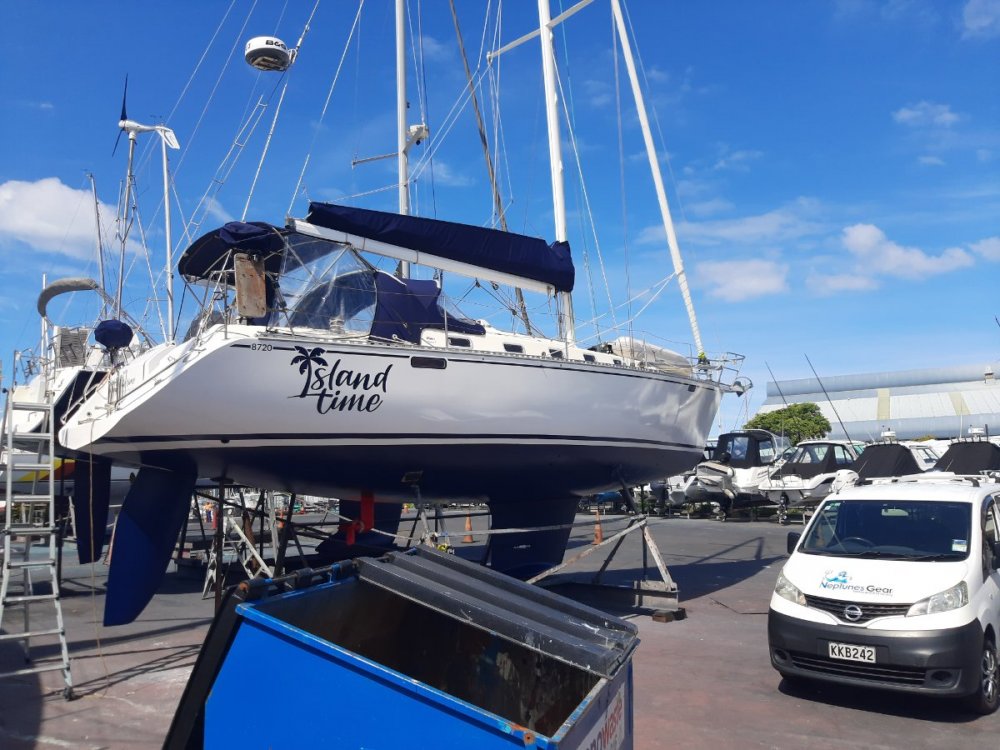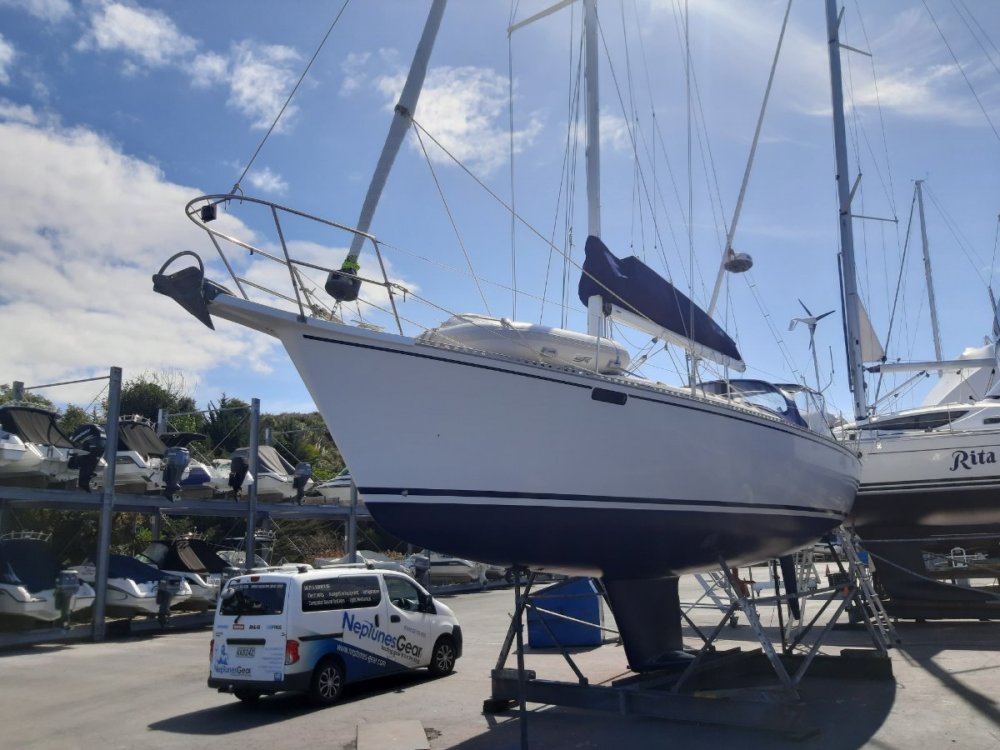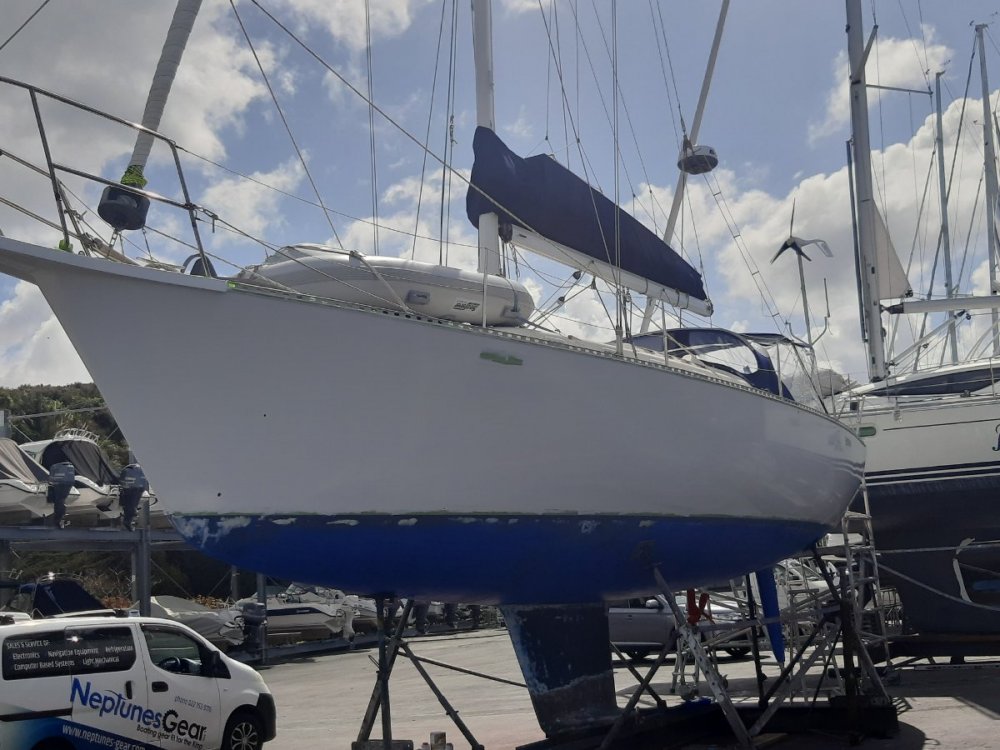-
Content Count
8,617 -
Joined
-
Last visited
-
Days Won
270
Content Type
Profiles
Media Demo
Forums
Gallery
Calendar
Store
Posts posted by Island Time
-
-
20 hours ago, CarpeDiem said:
LiPo doesn't really have a place on a boat as a fixed installation unless you've got some kind of bespoke electrical requirement like a 60v bow thruster?
Lots of boats have LiPo batteries on them these days, but these are in the form of auxiliary batteries for an electric tender outboard. So not part of the boats electrical system.
There's no legislation in NZ that prohibits you installing your own LiPo or any other chemistry so long as you stay under 60v DC peak power. However the legislation still requires that it is designed and installed by a competent person.
As soon as your solution (or any part of it) goes over 60v DC it requires an certified electrician.
So you can diy your battery upgrade if you know what you are doing and realistically that would mean following and understanding the regs IT mentioned.
Hmm, did I not read this right? LiFePo4 makes an excellent house battery system if properly set up. Way lighter, way faster charge, no sulphation, does not need to be kept full, much more stable voltage, and much longer life.
short term, if not keeping a boat, AGM. Long term, lead is dead! (Except for cranking/winch/thruster batts!
-
 1
1
-
-
5 hours ago, alibaba said:
If you want to assist in eradication, use 'em for bait. I take a bucket of them off my marina berth, then just squeeze them out of the casing , stick on hook. Fish like them!
I’m no expert, but my understanding is that they spawn if scraped - in the water.
-
Yes. But NZ regs are not up to date with lithium batts yet. They likely will conform to the ABYC and European standards. Currently you must have an audible and visual alarm at the normal operation location of the vessel that warns the operator of a faulty and impending disconnect (bms turning the batt off for any reason).
You also need to consider that standard batt fuses don't work, you need to upgrade to a fuse with AIC ratings of 20000 amps. That really means class T fuses.
Alternators need to have temp sensing, so mostly that means external regulators like balmar or wakespeed. Not to do this will result in alternator failure. Alt needs a load dump system.
All charge sources (shorepower, wind, solar, genset etc) need to be able to be properly programed for lithium, or replaced.
Because of all this, there is no such thing as a "drop in Lithium" battery!
For a basic understanding, I'd strongly recommend anyone thinking of this read the "drop in lithium, be an educated consumer" document on the marine how to website. IMO Rod Collins is one of THE authorities on this.
I'm out in the boat, but I can post the NZ reg battery requirements on Sunday or Monday when I'm back home.
-
On 22/08/2022 at 4:08 PM, bigal.nz said:
Is there much variance in the brand of antenna? I have South Pacific just down the road.
South Pacific are fine...
-
-
Hello Jack. There is no reason to post in multiple threads. Most users use the "unread content" button and will see your posts regardless of which forum or thread they are in.
-
Rubber nozzle on steel compressor, or a needle. Low pressure high volume pump if you don't have a compressor.
-
22 hours ago, harrytom said:
Well well IT you were conned listening to Legasea on Thursday night.When on Wednesday .Minister for Oceans and Fisheries said the bill will not procced.
The Government’s decision to drop controversial changes to fisheries legislation is welcome news to fishing and environmental groups concerned about threats to fish sustainability.
Oceans and Fisheries Minister David Parker has announced he will progress the part of the Fisheries Amendment Bill that enables monitoring cameras aboard commercial fishing vessels from 1 November.
Who do you think was lobbying the Minister about this?
The Minister removed the section about consultation as he believed it was not in the public interest.
The remainder of the bill is before the house for third reading next week, then it will become law.
-
1 hour ago, CarpeDiem said:
Been a work in progress since 2017. Strategy was published in June 2021. A Google search will bring up umpteen hits in newspapers online publications etc... Eg:
https://gulfjournal.org.nz/2021/06/more-marine-protection-on-the-horizon/
https://www.localmatters.co.nz/mahurangi-news/gulf-plan-to-boost-marine-protection/
There was a thread somewhere on Crew.
Submissions close 28th October 2022 for anyone who wants to contribute to the process:
Well, CD, that's one paying attention

-
OK, the next big issue is the adoption of Kawau bay and Tiritiri Matangi as "high protection areas" - no take of any sort. These areas are large, and mean that locals with small boats will be unable to fish. This is NOT supported by Legasea, and is being pushed mostly by dept of conservation (dept of confiscation!) again with limited (very) consultation. There is really no such thing now as a marine reserve. "high protection" area status is in perpetuity. This will happen in the next week or so I'm told.
I'm not against reserve areas, however they are labeled. Legasea say there are better ways, and have some compelling arguments. I'm not a fisherman, and anything that will help IMO is good, BUT the lack of transparency and public consultation/awareness is a real issue. IMO.
Who knew about this??
-
Last night I went to a presentation at the Gulf Harbor Yacht Club by Scott Macindoe of Legasea. I thought I'd post a bit about it here. It was disappointing to see only about 40 people there. Do YOU care about the health of our oceans?
It's important - possibly critical - for the health of our waters.
In Parliament RIGHT NOW is the Fisheries Amendment Act. In this, the commercial fishing lobby had managed to get a section basically removing any requirement for public consultation for changes to the QMS (quota management system) or the quotas. This means that effectively the fishing industry would be in control of their "own" resources, our fish and oceans. This is totally unacceptable - really the fox in charge of the henhouse. This bill has past reading one and reading two (with one to go) before becoming law. It is very concerning that our politicians have allowed such a terrible piece of legislation to be so close to passing into law. The Third reading is next week, and, if passed, will become law. YOUR rights to have a say would be gone. 🤮
However, it is due to Scott (The Backbone of Legasea) and some others, and thankfully a Minister (The Hon David Parker) with some backbone, that the section of the act removing your rights was yesterday removed - at ministerial discretion. This is a HUGE win for Legasea and the others involved, and if it were not for them this would have passed into law with little public comprehension or awareness. THANKYOU to all involved in preventing this!
So, if you care about fish stocks, public fishing rights, the health and wellbeing of our oceans, you should join Legasea (free) here https://legasea.co.nz/ and keep yourself informed.
I also think its really important to understand the failings of the QMS, and our regulatory bodies, who are effectively controlled by the fishing industry lobby. To help in this the website https://rescuefish.co.nz/ and, if you have not, watch this doco, "The Price of Fish"
Finally, Legasea is, of course, not funded. They could use any donation you can afford, $10 would be great.
-
 8
8
-
-
Viki, let me know what the deal is for a boat - in the front line. We'll book and pay as soon as it's available. Thinking of joining ICA as well...
-
Not just gst and duty, also clearance fees etc - allow a few hundy for that too. It mounts up pretty quickly..
-
Yep, full tent would have fixed it. Price to wrap was more than the whole paint job cost, incl hard stand! Could have made up something myself, but GH did not allow sufficient space around the boat for that without a substantial increase on hardstand fees.

-
 1
1
-
-
Well, ready for relaunch tomorrow. I learned a few things that might be useful to others. 3 weeks full time work for one...
September is probably about a month too early for outdoor painting. The nights (especially one - the most important one!) can be too cold. If the temp drops to dew point (actual temp depends on humidity and pressure) the gloss is lost. I lost some gloss in places on the hull due to this. Really I should have done a 3rd topcoat, to fix it, but no guarantees that would come out any better! So it is what it is.
She looks pretty good from 3m, but a close inspection wouldn't pass! There are bits on the hull that were too dry in the topcoat, although at the time I could not see them, and neither could a mate who was spotting. When the top coat was finished, I was pretty disappointed - it looked to bumpy to flatten out - but it is flattening now, and continuing to do so. The gloss is not too bad...
-
 1
1
-
-
13 minutes ago, Panache said:
I contacted Interlux several times about this problem, they didn't want to know, didn't send a rep out to view the boat, basically ignored me. All I wanted from them was to include the slow cure dew problem in the literature when they next reviewed it. I don't know if that ever happened as I rarely use their products anymore. Need a warm night with a light breeze, hopefully that will happen. Good luck.
Just to be clear to all;
Interlux is international - their equivalent product is Perfection and Perfection Pro - a 2 pack polyurethane
I'm using Altex - NZ made - 321 brushing polyurethane (also 2 pack)
My understanding is that this is an issue with Polyurethanes, and would effect any paint of this type. Altex have said, if it happens again, a heavily thinned additional coat applied in the morning will set more quickly, and therefore retain the gloss. That will be tomorrow if needed. Hopefully not...
-
6 hours ago, Panache said:
I have just done the inside of the cabin top with 321, didn't thin it and had to tip the rolled surface off. The finish is good and really glossy. I used the Interlux version when it first came out on the decks of my old boat. What I didn't realise was how slowly it cured. I was all finished about 2pm in the afternoon, the dew came down about 10pm and completely destroyed the finish. There was nothing in any of their literature warning about outdoor use. I ended up having to redo the decks by spraying with 2 pack car lacquer that goes off fast to avoid the dew problem. Fingers crossed it all works out good for you.
Funny you should say that. Last night about 6 there was a big temp drop and hard rain. Marked the hull with spots, and completely de-glossed the transom, esp the sloped parts. :-(. Another coat today, back to glossy, I hope that it will be off sufficiently tonight - looks like the dew point will be about 6 deg tonight, which is what the low is forecast to be. Here's hoping it will be OK - at least no rain forecast this time...
Totally agree this problem should be in the literature, but its not anywhere I can see.
-
35 minutes ago, Kevin McCready said:
I hope you meant the vac died and not your dewalt sander? Looks nice. What sort of boat is IT?
Yeah, the old Ozito vac. The sander is fine
 . Island Time is a Farr Phase 4 (very like a 1220..)
. Island Time is a Farr Phase 4 (very like a 1220..)
-
1 hour ago, splat said:
Roll & Tip?
Just roll. My experiments in the workshop gave better results without tip...
-
Well, Island Time is long overdue for a repaint. A couple of weeks ago I made the call to paint her myself. I decided I could do the topsides 1st, and gave myself 3 weeks off work.
Well, 15 days in, heaps of sanding, filling, priming, undercoating, and sanding. Oh yeah and sanding.
I'm using the Altex system, epoxy undercoat and 321 brushing polyurethane. Following from the great job Joel did on his 1020, I've thinned the paints 7%. Seems to be working well.
I also was using a cheap vac with my dewalt sander. It died of overuse. Upon advice from a friend who's a boat builder, I coughed up for a better vac, and bought a decent one (Nilfisk Attix 44) with proper filters and a knocking cycle to help knock the dust from the filters. What a difference! No dust escapes from the vac at all, sandpaper lasts longer, and sanding is considerably faster - with the same sander, just a better vac.
Anyway, 15 days on the boat full time, and ist top coat this morning, starting to flatten out as it's supposed to.
I'm pretty happy so far, but hoping the paint will flatten out like it's supposed to as it dries.
-
 1
1
-
 5
5
-
-
54 minutes ago, aardvarkash10 said:
Did pretty much exactly that on a cabin top repair. Not sure I'd taper the inside - nothing is likely to force the plug outward.
Actually, internal pressure is not unknown. Boats falling off waves with hatches shut can produce sufficient pressure to blow out windows on occasion.
-
That'll work. For a structural repair, taper and overlap the glass. If you just want to fill the hole, find some suitable material (timber, foam) and use a hole saw to cut out a suitable size plug. Make it 5mm less deep than the thickness of the cabin top. Epoxy it in place, fill the cavity and fair (Vinylester filler is fine, dries in 20 mins, and sands well), paint to suit.
-
 3
3
-
-
4 hours ago, Guest said:
Yip, and what if your network goes down? Prefer not to have all my eggs in one basket.
A configurable engine temp monitor with audible alarm to a hot spot bolt on head coolant outlet is a fraction of the price.
I have an engine guardian on the trusty old 1KZ-te. Going to ad one to the the Yanmar. Mark 2 has oil.
Ok, lets think about that. Your car (after 1996) runs on canbus. Do you have a backup for that? Canbus (NMEA2000) on a boat can be broken, but most of the the devices can work standalone, or you can detach a faulty device if needed. Worst case, if the network does go down, factory instrument panel still works, MFD works standalone, maybe no autopilot. Your engine instrument data wont display on NMEA2000 displays. You can still get by
-
 1
1
-
-
1 minute ago, eruptn said:
I have a basic network with 2 displays, why not use them , I don't see size matters. I'm blind now except for a audio alarm.
The audible alarms and idiot lights are better than nothing, but by the time the oil pressure alarm (for example) goes while the engine is working hard, it's already too late...


![Side%20colour%20cropped[1].jpg](https://crew.org.nz/forum/uploads/monthly_2022_10/1705289393_Side20colour20cropped1.thumb.jpg.937617fec9029df0e01c512d9499eecc.jpg)
![Profile%20colour%20cropped[1].jpg](https://crew.org.nz/forum/uploads/monthly_2022_10/88652045_Profile20colour20cropped1.thumb.jpg.09da3edde60b3fadc18adb0726370aca.jpg)






Srl24 Skipper Available
in Crew Finder
Posted
No problem. Welcome aboard!